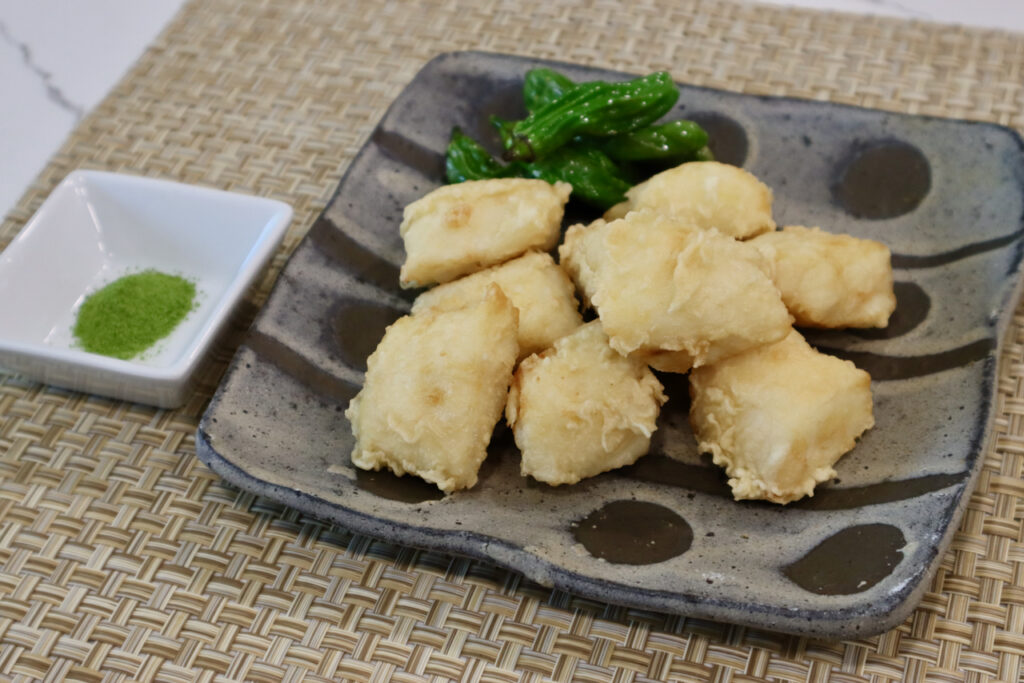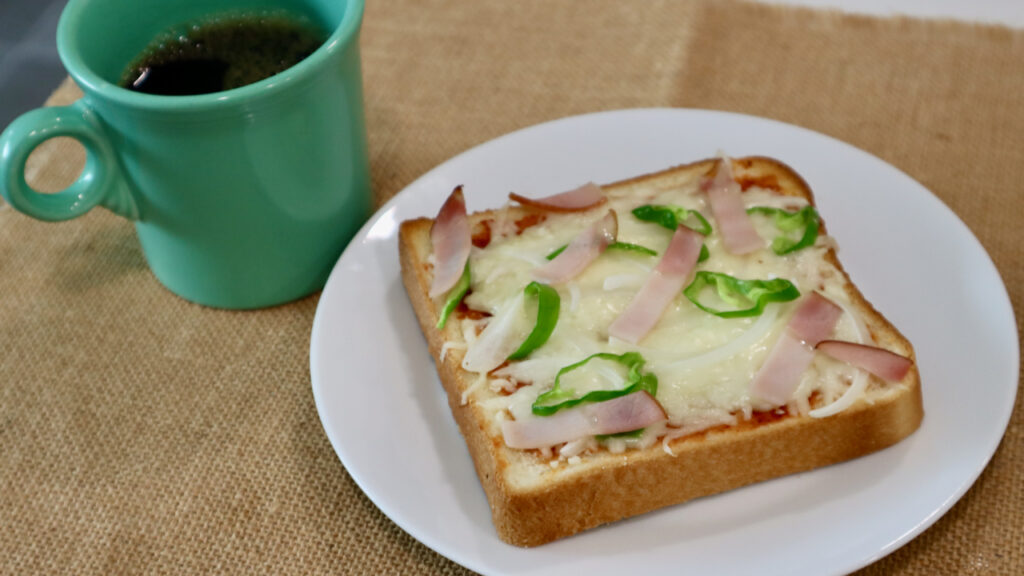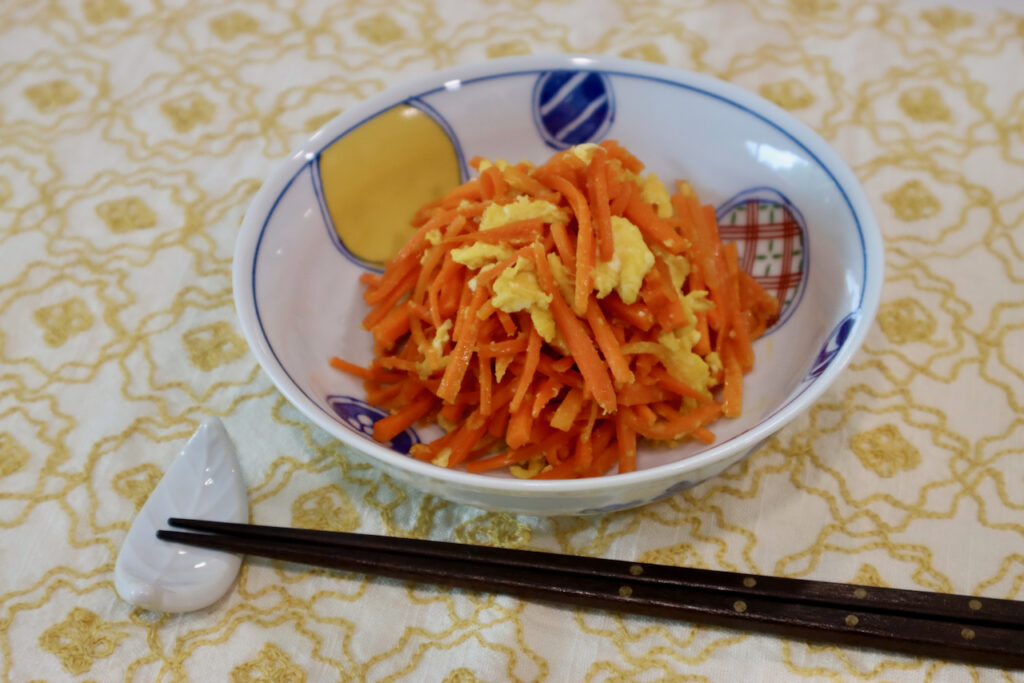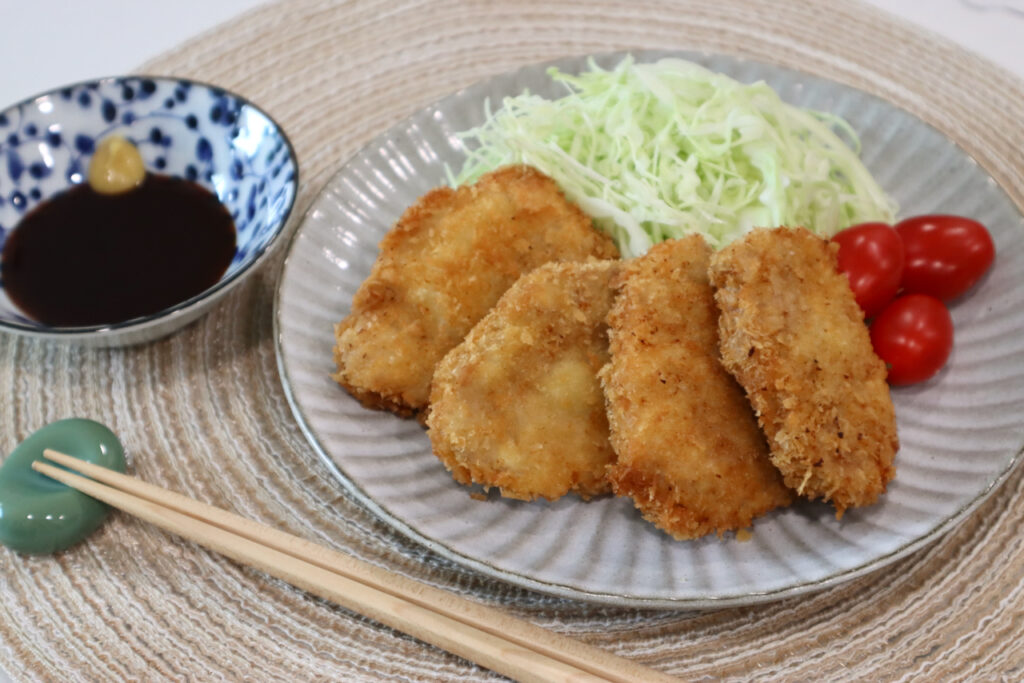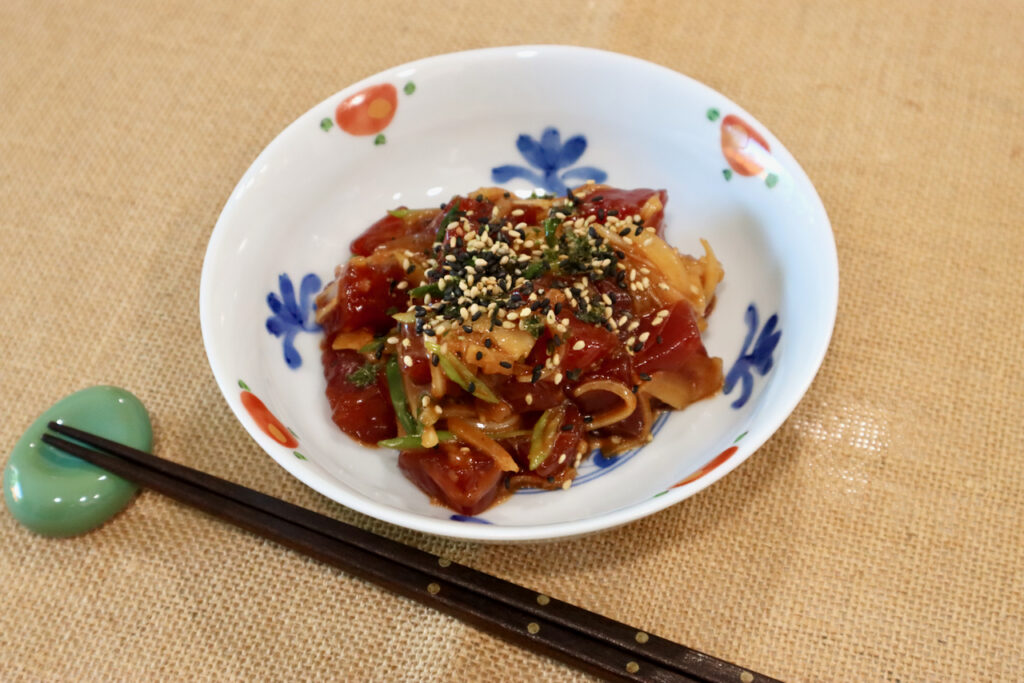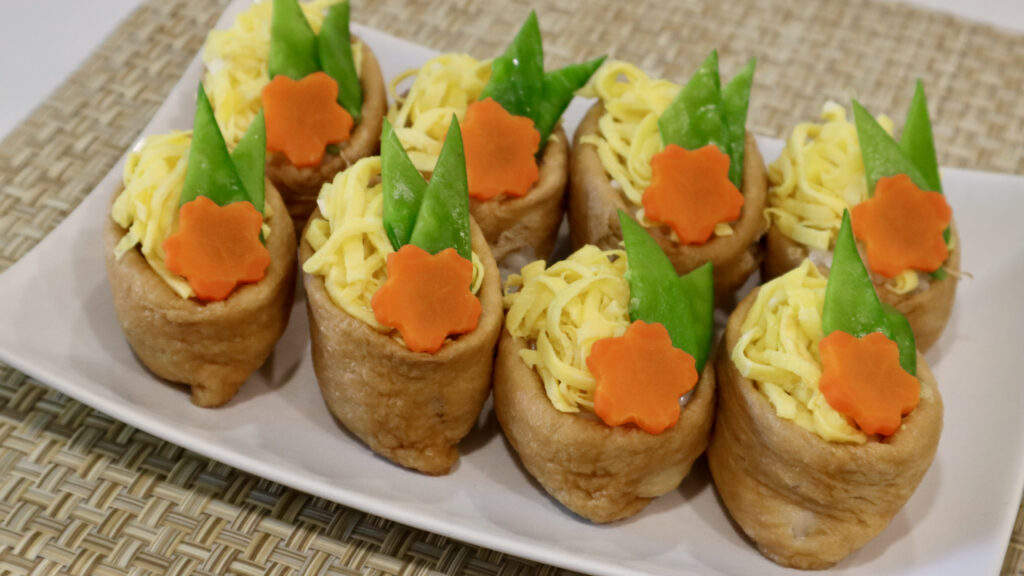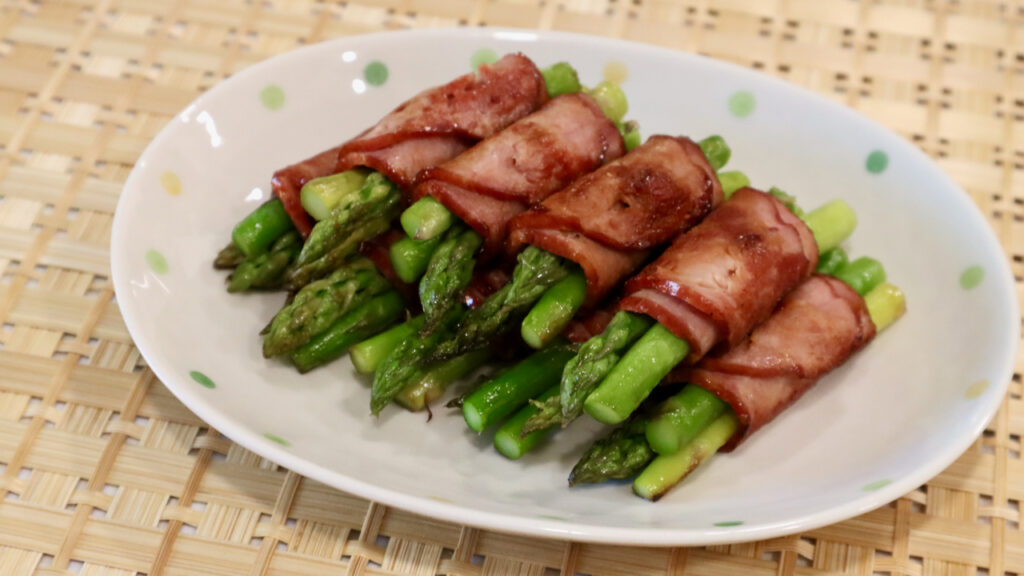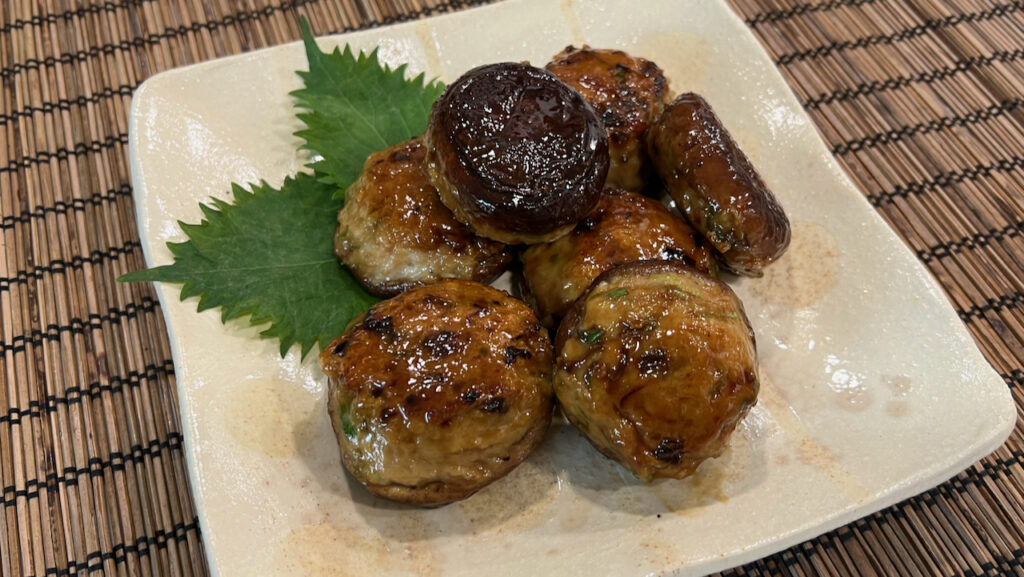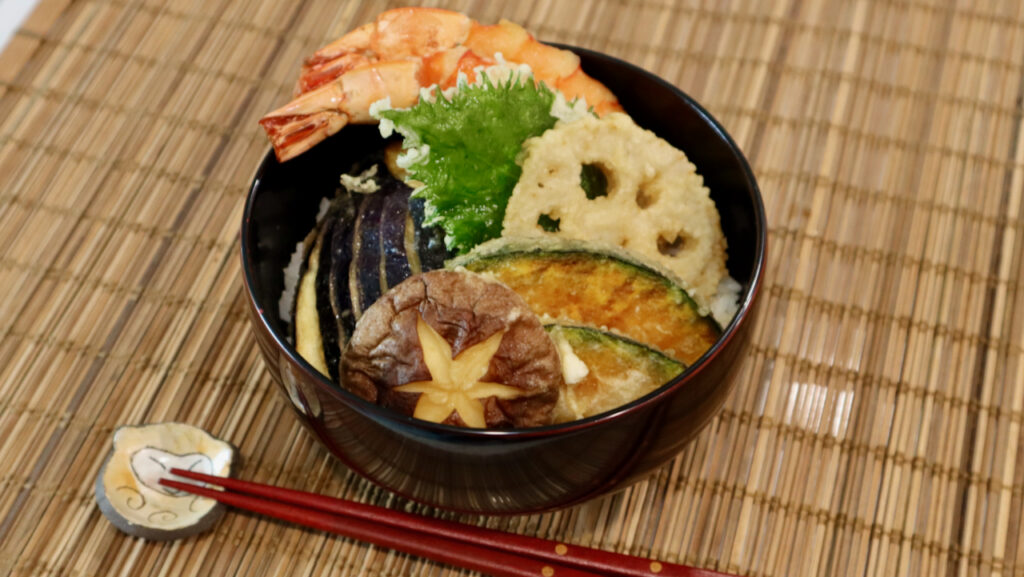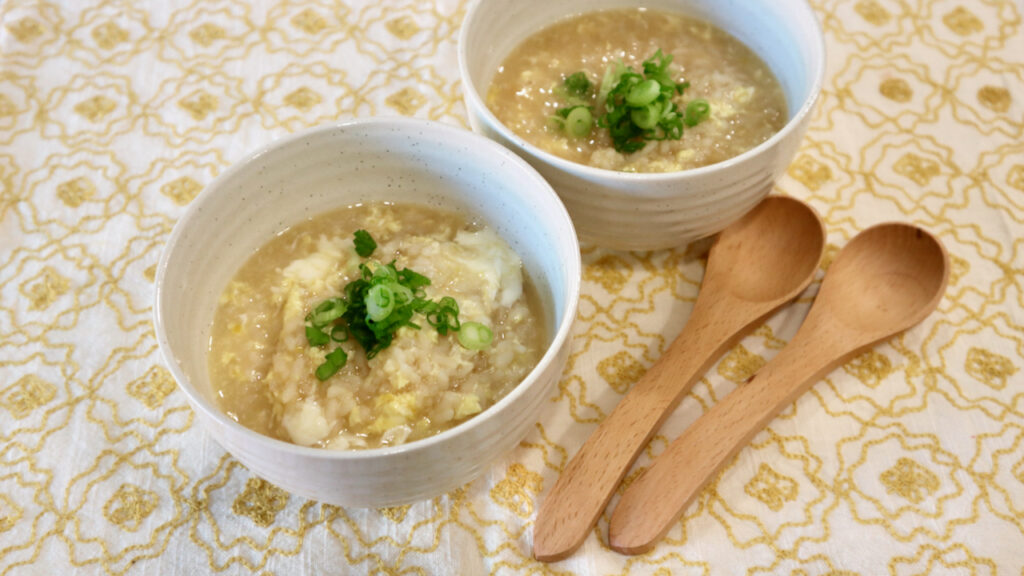Fish Tempura (白身魚の天ぷら) is deep-fried white fish in Tempura batter. It has a very light feel even though it’s deep-fried, therefore this even appeals to people who don’t prefer heavy dishes. It is also not hard to make at home if you follow a couple of tips.
Pizza Toast is literally toast with pizza toppings, and it is a popular snack or meal in Japan. It’s a super easy dish with almost no cooking involved, so absolutely anybody can make this.
Ninjin Shirishiri (人参しりしり) is pan-fried julienned carrot with scrambled egg. It is originally a popular local dish from Okinawa, a very southern island in Japan. But Ninjin Shirishiri now is spread all over the country and became a side dish many people eat for meals and Bento lunch boxes.
Tuna Poke is raw Tuna cut into cubes and marinaded with a spicy soy-based sauce. Poke is actually a Hawaiian dish, but Japanese immigrants there may have contributed to the development of the evolution for the seasonings of Poke.
Inari Sushi or Inarizushi (いなり寿司) is a kind of sushi or rice ball. Sushi rice is stuffed in seasoned Aburaage tofu pouches. This recipe is an upgraded version with pretty garnish for festive spring occasions. (If you are looking for regular Inari, this is the one.)
Aspara Bacon (アスパラベーコン) is asparagus spears wrapped with a bacon strip and pan-fried. It doesn’t sound like a very Japanese dish, but it is a popular side dish for different occasions.
Aspara Bacon is so simple to make with easy-to-find ingredients. It is great for a Bento lunch on a busy morning. It is also a popular appetizer at home or at Izakaya bars in Japan. It’s salty and somewhat meaty, and goes well with beer and other drinks.
Stuffed Shiitake Mushroom (椎茸の肉詰め), Shiitake Nikuzume, is Shiitake mushrooms stuffed with ground meat and cooked with Teriyaki sauce. It is just like Renkon Hasamiyaki, and the harmony of vegetable and meat is enjoyed with a tasty sweet and salty sauce. Stuffed Shiitake Mushroom is great as a dinner entree and also good for a Bento lunch dish.
Tempura Donburi (天ぷら丼) is a Tempura bowl, fried vegetables and seafood over rice with sauce. It is also called Tendon for short. It is one of the favorite rice bowl dishes in Japan, and very easily found in many stores and restaurants there.
Tamago Zosui (卵雑炊) is rice porridge or risotto cooked with eggs. This mild tasting simple food is great at any time, but especially good when having no appetite or trying to avoid heavy foods.
